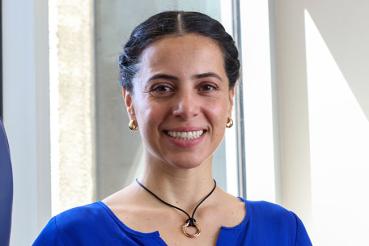If you're cisgender, or your gender identity aligns with your sex assigned at birth, you probably take for granted some aspects of your health care — specifically, having an appointment with a health care provider who understands your health needs based on your gender. When you're cisgender these interactions are simpler. When you're transgender and gender-diverse, however, finding gender-affirming care can be far more complicated, especially as you age.
According to findings published in the 2015 U.S. Transgender Survey report, 33 percent of transgender people who had seen a health care provider within the past year reported having at least one negative transgender-related experience, including the following:
- Verbal harassment
- Refusal of treatment
- Having to teach the health care provider about transgender people to receive appropriate care
Ravi Iyengar, MD, an endocrinologist at Rush University Medical Center, explains how the continuum of care looks for transgender and gender-diverse people as they age — and what can happen when they don't receive appropriate care.
Establishing the right care team
Ideally, the continuum of care would happen for the transgender and gender-diverse population as it would for any other group. Care would follow a progression, from pediatrics to adult, to help the patient navigate care throughout their life.
Instead, since trans and gender-diverse people of any age often don't know where to begin, an effort to find trans-friendly and gender-affirming care starts with Google and social media. Other resources include support groups and community centers where they can connect with other transgender people who have had experiences with other providers who are knowledgeable on care and screenings.
Although Rush provides an established continuum and coordination of care thanks to the efforts of the LGBTQ Leadership Council, this care doesn't currently exist at many health care settings for transgender and gender-diverse people. Iyengar, however, stresses the need for a system to be established.
"It's definitely important to have a multidisciplinary care team that's accessible to trans and gender-diverse patients of any age, from children to seniors. So many patients have difficulty navigating a system that's not kind to them, and many providers don't make it easy," Iyengar says.
An ideal care team that could deliver affirming care for trans and gender-diverse people may include, some of the following members:
- Primary care provider (including pediatrician for patients younger than 18)
- Behavioral health specialist
- Endocrinologist
- Obstetrician/gynecologist
- Urologist/urogynecologist
- Patient navigator
- Surgery team
At Rush, a social worker helps coordinate gender-affirming care. "We have an LGBTQ liaison to understand what patient needs are, what they're looking for, and how to refer them to the appropriate provider and service," Iyengar explains
The liaison acts as both patient navigator and key resource, which may include performing psychosocial evaluations and helping with questions about gender in general.
"It’s also important to help people navigate the financial component of procedures and treatments, especially with insurance and how that varies on a state-by-state basis," Iyengar adds. Although Rush does not currently have a dedicated financial navigator for gender-affirming care, often times the social worker will assist with this important aspect of care.
Rush is also in the process of developing a patient intake form on its LGBTQ page to help connect trans, gay, lesbian and other gender-diverse people with the right services and providers. An online Rush portal is in the works as well to serve as a starting place for trans people seeking services and providers.
So many patients have difficulty navigating a system that's not kind to them, and many providers don't make it easy.
Discussing fertility and available options
Family planning is a key component of the continuum of care for trans and gender-diverse individuals. A common misconception is that gender transition and reproduction are incompatible. It's a false notion for good reason. "I always tell patients, 'There are multiple ways to have a family,'" Iyengar says.
In fact, it's important that all transgender and gender-diverse individuals get fertility counseling to make sure they fully understand fertility preservation and reproduction options. If a trans or gender-diverse person is undecided on whether they want biological children but is still on therapy, the possibility of coming off of therapy needs to be addressed.
"It's a more detailed discussion that involves a reproductive endocrinologist and OB-GYN, because in transmasculine individuals, for example, they may be receiving hormone therapy around egg preservation that goes against the identified gender," Iyengar explains. "So it's about making sure the patient is as informed as possible."
Fertility preservation for biologic offspring includes the following:
- Oocyte cryopreservation
- Embryo storage
- Sperm cryopreservation
Iyengar adds that it's ideal to undergo sperm and egg preservation before hormone therapy so there is no interruption, and long-term effects of estrogen or testosterone on the hormones present at birth are not fully understood. That said, many transmasculine and transfeminine individuals have been able to have successful pregnancies and healthy children.
The full spectrum of screening
Screening is another aspect of the care continuum and care coordination that requires special attention. Many factors come into play to determine proper screenings. "Whoever the individual sees, whether it's a primary care provider or a specialist, we should do appropriate screenings based on both the sex assigned at birth and the identified sex," Iyengar says.
Screenings might occur in some of the following ways:
- An individual assigned male at birth but who identifies as female who retains her anatomy will still need prostate cancer screenings.
- A transfeminine individual over the age of 50 who has been on estrogen therapy for longer than five years, would discuss mammograms and breast cancer screenings with her provider at the appropriate times.
- An individual assigned female at birth but who identifies as male would still need cervical cancer and breast cancer screenings, although the risk of breast cancer is lower for transmasculine individuals who have had top surgery, a procedure to eliminate breast tissue.
These screening guidelines are based on cisgender health studies and have to be extrapolated from the U.S. Preventive Services Task Force on when to conduct those screenings since no long-term health data exists on gender-diverse people.
Treating older trans and gender-diverse patients
Continuum of care also needs to factor in age, since health is more complicated in older trans and gender-diverse people. As patients age, a lot of therapies and dosages change, along with the desires and aims of patients themselves.
In the 50-plus population, age-related conditions such as cardiovascular disease, diabetes, hypertension and high cholesterol must be considered in the context of hormone therapy, and whether estrogen or testosterone will interfere with either the disease processes or medications used to treat these diseases.
"These individuals should still receive hormone therapy, but we may need to 'start low and go slow,' for those with significant cardiovascular issues" Iyengar cautions. "Additionally, it may take less estrogen or testosterone to achieve the desired effects since hormone levels fall anyway as we age."
Again, since no substantial data exist on long-term outcomes and adverse effects after starting therapy in these individuals, these outcomes can only be based on cisgender studies for now. However, ongoing research has begun. A July 2018 study published in the Annals of Internal Medicine, examined heart disease risk in trans and gender-diverse individuals.
There's also a nationwide effort to better understand the effects of hormone therapy on multiple outcomes, ranging from metabolic health to bone health. With this type of information being studied, screening guidelines will be better formulated and available to trans and gender-diverse individuals in the future.
Understanding the risk factors
There's a great deal at stake when transgender people go untreated. "When they are constantly turned down from a health care system or can't find care, patients may understandably find other means such as untrained, nonmedical people performing body-altering procedures that may not be monitored by a health care professional, which could cause life-threatening injuries," Iyengar says.
And even if they don't find other means, the transgender population is at high risk for depression and suicide. "There's been a lot of data that show high rates of stress and suicide attempts, especially in the adolescent population, which is very disheartening to see," Iyengar explains.
In an effort to address this, behavioral health is central to gender-affirming care at Rush, which includes psychosocial evaluations from an LGBTQ liaison to psychiatrists who have experience with this type of care.
According to the 2015 U.S. Transgender Survey report, more transgender and gender-diverse individuals attempt suicide than any other population. Nearly 40 to 50 percent of transgender and gender-diverse individuals have attempted suicide, regardless of family support. And a 2018 Pediatrics report revealed significantly high rates of attempted suicide in transgender and gender-diverse youth.
These statistics further underscore the need for gender-affirming care and a standard of care for trans people of all ages. If they can quickly and easily connect with a provider who understands their health needs and can deliver the appropriate care, transgender people can make better decisions that result in overall better health.
"I like to always ask my patients what their ideal self would be or look like down the line, recognizing that it can change over time," Iyengar says. "But in that moment, I like to understand how best I can relieve their distress, so I can offer them services they may not have known we have at Rush. It's a good way to figure out what exactly they're looking for and how best to help them."



